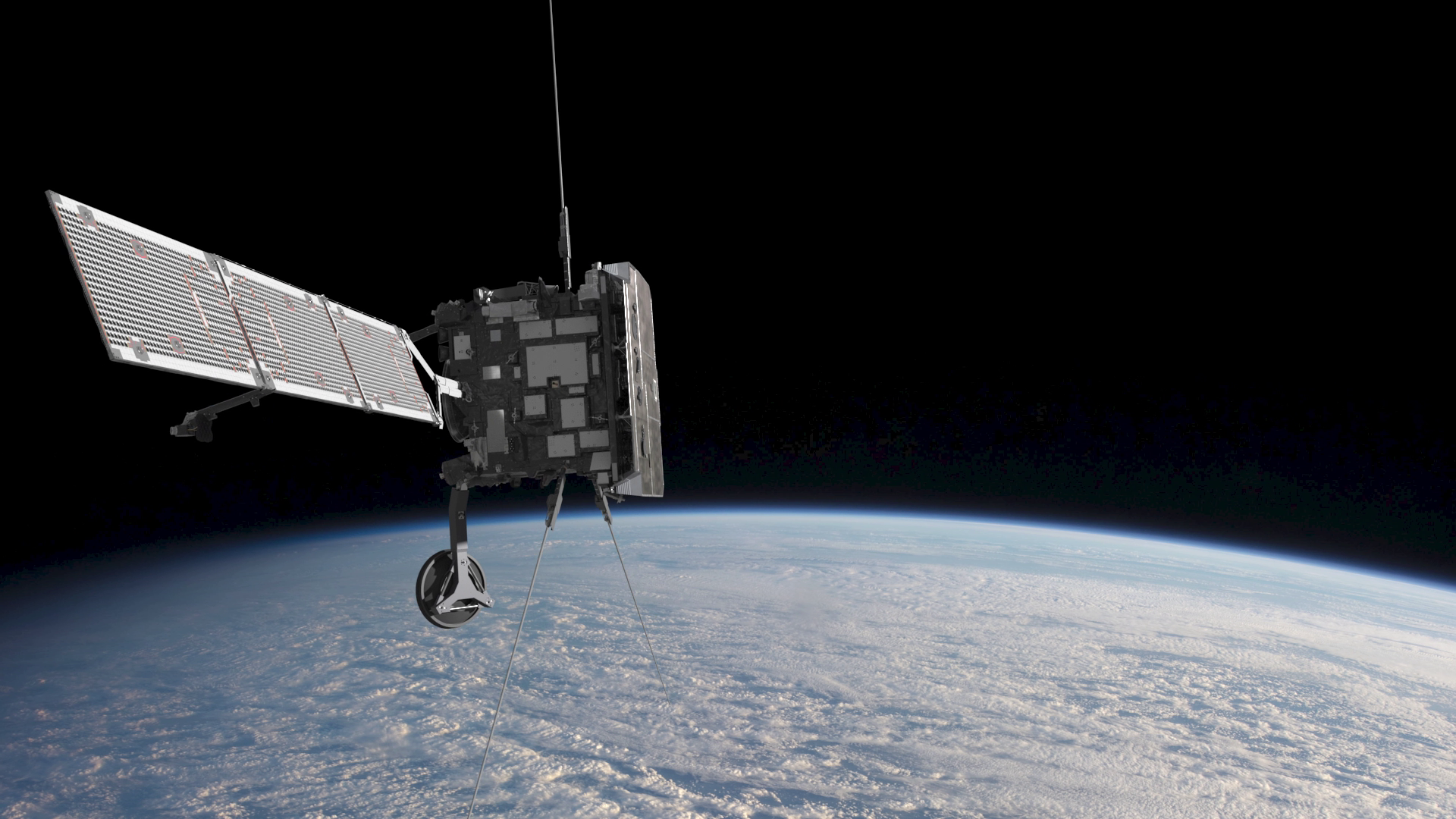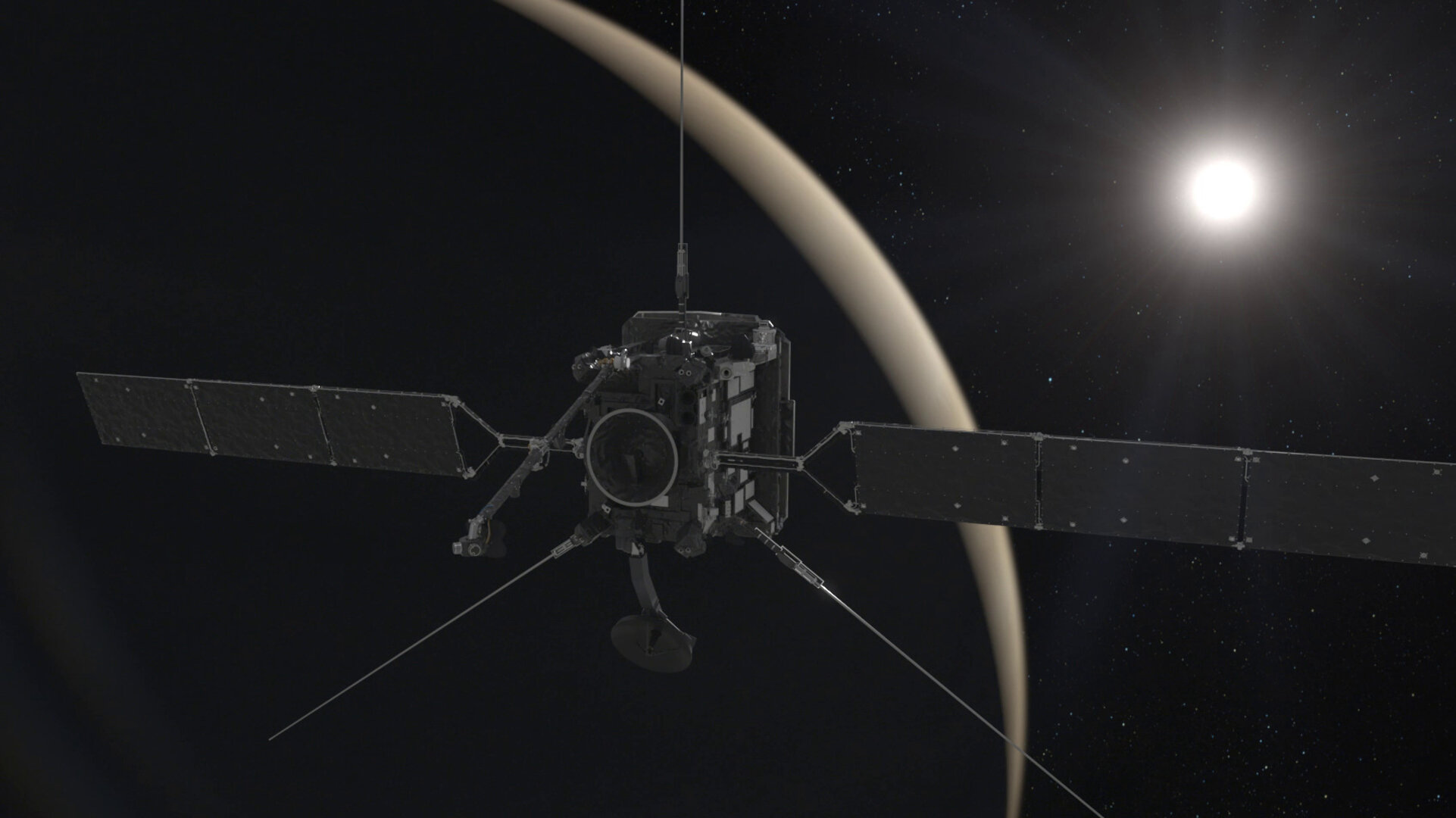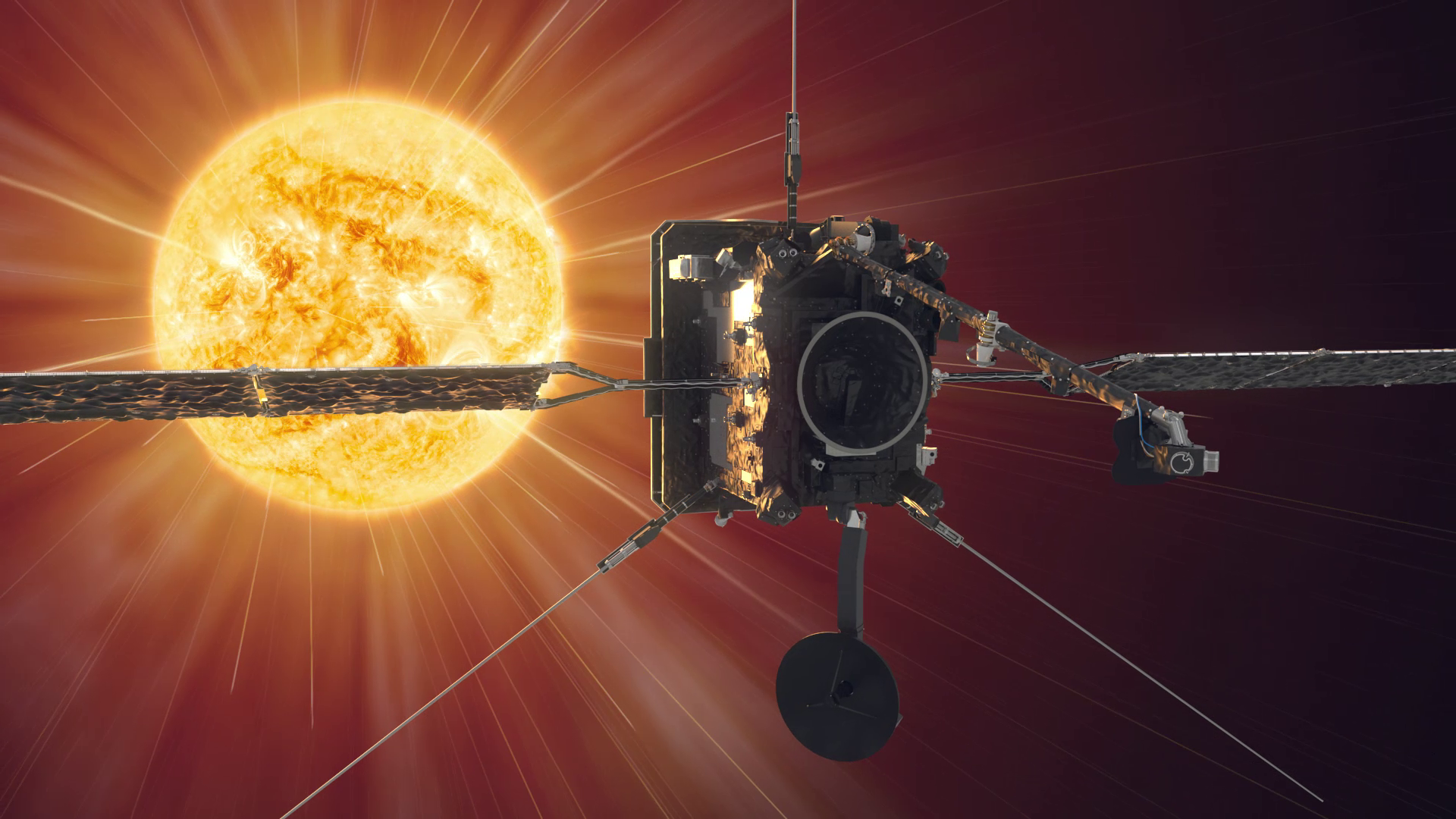How to get the best view of the Sun
ESA’s Solar Orbiter is imaging the Sun from closer than any spacecraft has done before, and will be the first to directly observe the Sun’s poles, which are key to understanding the star’s magnetic field that drives the generation of space weather. But getting to the uniquely tilted orbit necessary to observe the poles requires a series of complex manoeuvres, building on techniques from a host of previous missions.
In the early hours of 10 February 2020, Solar Orbiter launched from NASA’s Kennedy Space Center in Cape Canaveral, Florida, and began its journey to the Sun.
Through a combination of measurements of the spacecraft’s surroundings (in situ) and remote observations of our star, the mission aims to answer questions about how the Sun produces the solar wind, a stream of electrically charged particles whose effects can be felt throughout the Solar System.
Exploring the Sun’s poles


Access the video
Studying the Sun’s polar regions is crucial to improve our understanding of these processes. However, as a result of the physics that shaped the Solar System, Earth and the other planets orbit the Sun in roughly the same flat plane, known as the ecliptic, which doesn’t allow for a good view of the Sun’s poles.
Solar Orbiter will have to leave this plane and embark on an ‘inclined’ orbit in order to study the Sun’s polar regions, as they can only be directly observed by a spacecraft able to look at them from above or below the ecliptic.
“Achieving the large inclination of Solar Orbiter’s orbit is quite challenging,” says José Manuel Sánchez Pérez, Solar Orbiter mission analyst at ESA. “It requires a huge change to the spacecraft’s velocity, that is, to its energy.”
In fact, Solar Orbiter will be just the second spacecraft to perform such a manoeuvre, following the NASA/ESA Ulysses mission which used a gravity assist at Jupiter to increase its inclination and make in-situ measurements above the Sun’s poles in the mid-1990s.
Gravity assist manoeuvres allow spacecraft operators to adjust the speed and trajectory of a spacecraft using the gravitational pull of planets (or other bodies) instead of using large amounts of fuel. In the case of Solar Orbiter, they will use the technique to not only tighten the probe’s orbit around the Sun, but also to raise it from the ecliptic plane.
In order to reach the necessary inclination, the spacecraft will follow an ever-changing path that will be continually tilted and squeezed, edging it higher and higher to give it a view of the Sun’s poles. Each time Solar Orbiter makes its closest approach of the Sun, it will see it from a new perspective.
“The rockets we have are not powerful enough to inject the spacecraft immediately into the target orbit,” says José Luis Pellón Bailón, ESA’s Solar Orbiter Deputy Spacecraft Operations Manager. “We have to change the orbit in space and that can be done either by performing manoeuvres by the spacecraft, which requires a lot of propellant, or by performing planetary flybys.”
Getting to the Sun


Access the video
Solar Orbiter orbits around the Sun on an elliptical trajectory, completing one round every five to six months. The perihelion, the point in each orbit closest to the Sun, shifts gradually closer with each pass. While the mission’s first perihelion in June 2020 was at 77 million kilometres from the star’s surface, about half the distance between the Sun and Earth, Solar Orbiter will eventually get as close as 42 million kilometres.
“During the cruise phase, which started four months after the launch and lasts until late 2021, we are using two planetary flybys at Venus and one at Earth to tweak our orbit,” says ESA Solar Orbiter Project Scientist Daniel Müller. “The swing-by at Earth in November 2021 will be at the altitude of only 440 kilometres, really close to home, so we should be able to observe Solar Orbiter with small telescopes.”
These first flybys will enable the spacecraft operators to adjust Solar Orbiter’s trajectory in order to get it into the orbit required for its scientific tasks.
Shortly after the final Earth flyby in 2021 the full science phase of the mission will begin. In March 2022 Solar Orbiter will perform its first close pass of the Sun, coming to within about a third of the distance between Earth and the Sun. This will provide the first opportunity for the spacecraft’s six sets of telescopes to demonstrate their true power and acquire very high-resolution images of the Sun’s surface and its atmosphere, the corona. The spacecraft will then continue on its elliptical orbit.
With a little help from Venus


Access the video
“Over the next five to six years as we periodically approach the Sun every five to six months, we will gradually incline our orbit to see the polar regions,” says Daniel. This inclination will be achieved by harnessing the gravity of Venus. Solar Orbiter’s orbit was therefore designed to be ‘in resonance’ with the planet.
The spacecraft will pass close by Venus every few orbits, using the planet’s gravity to alter its orbit and reach an inclination of 18 degrees by early 2025. During its proposed extended science phase, Solar Orbiter will increase the inclination of its orbit even further, ultimately reaching 33 degrees above the solar equator in 2029. At this inclination, the as yet poorly explored polar regions would come even more directly into view.
“The laws of orbital mechanics that govern these gravity assists are exactly the same as for spacecraft using gravity assists to reach other planets,” explains José Manuel. “What makes Solar Orbiter different is that we are not trying to get it to a planet or minor body using the minimum amount of fuel or in the shortest time, we are trying to fine tune the inclination of its orbit and its distance to the Sun.”
The technique, José Manuel explains, is more common for missions exploring the gas giant planets and their moons, such as NASA’s Galileo, Cassini (a joint mission of NASA, ESA and the Italian Space Agency) and ESA’s JUICE, as it allows a spacecraft to visit a body multiple times and make repeated observations each time it passes.
Solar Orbiter mission analysts borrowed the technique to allow the spacecraft to gradually increase the inclination of its orbit with each Venus encounter, with the aim to gain new perspectives on the Sun, rather than having any scientific interest in the planet itself.
Scientists hope that understanding the activity in the polar regions will help them unravel the mystery of the 11-year solar cycle, the periodical ebb and flow of the Sun’s magnetic activity that influences the environment across the entire Solar System.
Solar Orbiter was designed to operate for ten years, but the mission could continue its scientific exploration for much longer. If the spacecraft is still in good shape, the scientists will look to squeeze as much out of it as possible and perhaps bring it even closer to the Sun’s surface.


